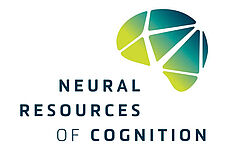The extracellular matrix (ECM) plays a key role in physiological synaptic plasticity, learning and memory (Dityatev et al., 2010).The underlying mechanisms involve multiple mechanisms, including the regulation of L-type voltage-gated Ca2+ channels,NMDA receptors, Ca2+-dependent K+ channels, and modulation of axonal excitability (Evers et al., 2002; Kochlamazashvili et al., 2010; Morellini et al., 2017; Minge et al., 2017).
In aged brains, established depression, and dementia, the ECM expression is elevated and there are changes in the sulfation pattern of ECM molecules. Our ongoing research is focused on the dissection of mechanisms governing the upregulation of ECM and downstream events that affect synaptic and cognitive functions.
On the other hand, our studies demonstrate that the neural ECM, particularly in the form of hyaluronic acid and chondroitin sulfate-rich perineuronal nets, is attenuated in the ketamine model of schizophrenia (Matuszko et al., 2017; Kaushik et al., 2020). ECM attenuation may result in epileptiform activity (Vedunova et al., 2011; Garau et al., 2015). The mechanisms underlying ECM degradation involve matrix metalloproteinases, such as ADAMTS4/5 and MMP-9. They appeared to be under the control of dopaminergic and serotoninergic systems, involving D1-like and 5-HT7 receptors, respectively (Mitlöhner et al., 2020; Bijata et al., 2017).
The mechanistic analysis of ECM-mediated regulations in the brain is complemented in our group by search of new potent compounds and gene therapy strategies that could be brought into clinical trials to target the neural ECM in neurodegenerative and psychiatric diseases. The effects of promising treatments are to be tested in animal models of Alzheimer’s disease, FTD and other tauopathies, vascular dementia, epilepsy, and depression.
For the preclinical characterization of ECM targeting drugs, we are employing the established battery of synaptic and cognitive assays. Furthermore, we are developing new assays to study the role of ECM in the regulation of neural network activity, particularly during reversal learning, which was found to be strongly ECM-dependent (Morellini, et al., 2010). To monitor the functional dynamics of neural networks, as well as the structure of microglia and tetrapartite synapses, we use in vivo two-photon imaging of neuronal activity and microglia (Cangalaya et al., 2020) as well as customized AAV-based fluorescent probes for the labeling of ECM, astroglia, pre- and postsynapses. Live imaging of learning-induced remapping is performed in the retrosplenial cortex of awake mice placed in virtual reality.
To develop treatments that would be efficient at the advanced stages of neurodegenerative diseases, we foresee a necessity to combine neuroplasticity-enhancing ECM-targeting with cognitive training and approaches for clearing toxic aggregates (Labus et al., 2020), controlling neuroinflammation (Kaushik et al., 2018; Stoyanov et al., 2020), and promoting neurogenesis (Caiazzo et al., 2011) and synaptogenesis (Suzuki et al., 2020).


